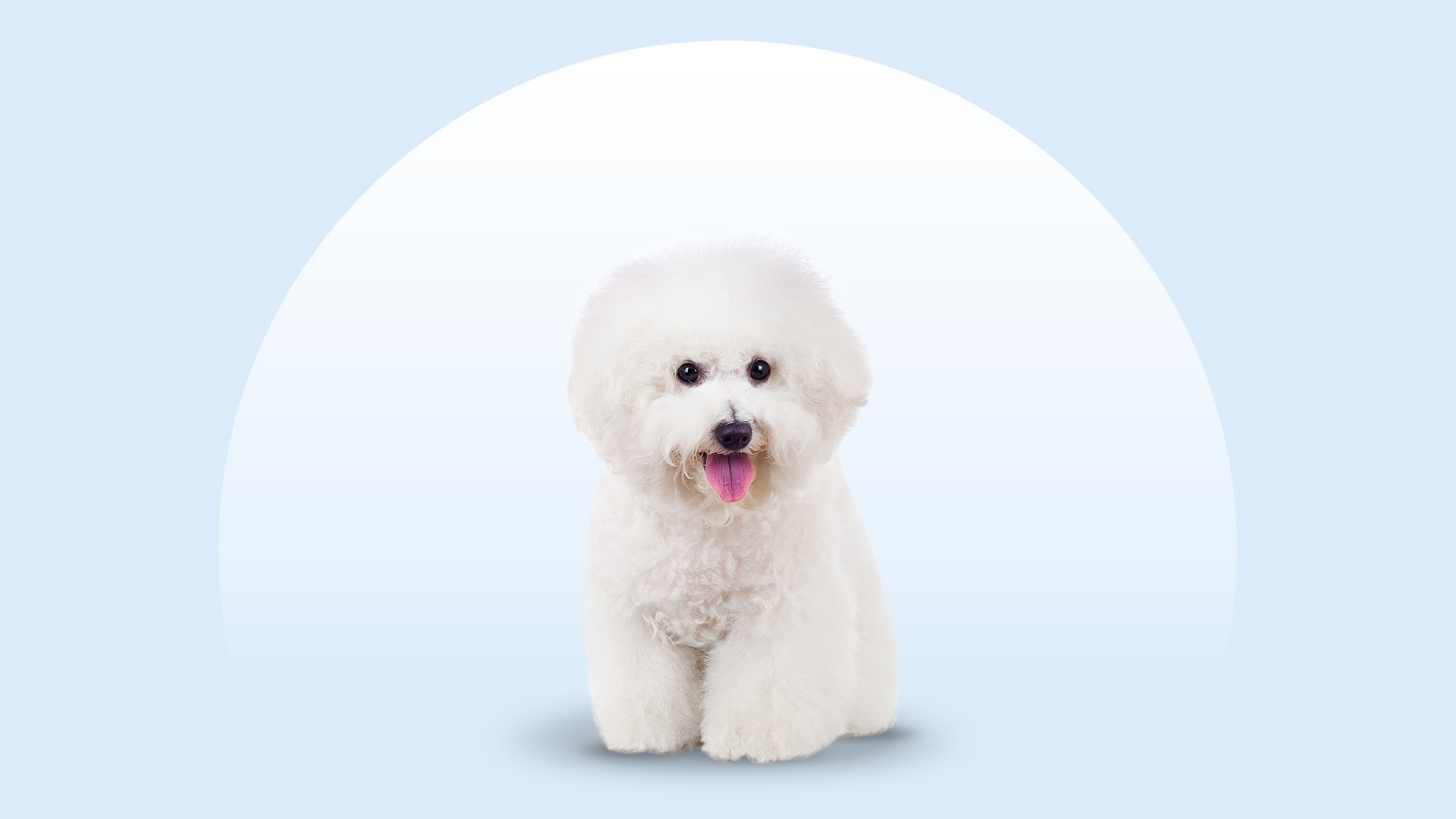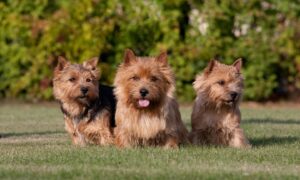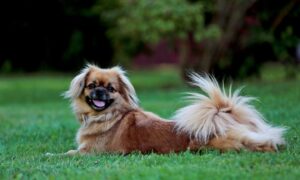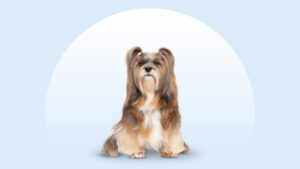Bichon Frise
Updated December 15, 2025
Bichon Frise
Updated December 15, 2025
It’s easy to picture a Bichon Frise hiding in a sea of stuffed animals—they’re the poofy white one you could mistake for a plushie. But there’s more to them than their cute exterior: Bichons are intelligent, loyal companions who enjoy exercising, learning new tricks, and standing beside their favorite person (that’s you).
Adoring, Sidekick, Smart
12–18 pounds
9.5–11.5 inches
14–15 years
White
A Bichon Frise is your No. 1 fan. Seriously. They think everything you do is the most interesting thing in the world—even if it’s just pouring cereal. (Nobody does it better!)
These tiny pups are proud of their status as Velcro dogs, so expect a little less privacy when you adopt one of these nuggets. (It’s totally worth it.) In return, you’ll get a loyal, lively friend who is basically your personal cheerleading squad—but do them a favor and be their biggest fan, too.
Bichons Frise are great at learning tricks, and if you shower them with praise and affection, they’ll be the happiest pup on the planet.
Bichon Frise Characteristics
Bichon Frise Appearance
Known for their white “powder puff” coat and curious expression, the Bichon Frise dog breed looks like a little white teddy bear. Their long tail curls over their back, and their deep, dark eyes reflect their intelligent nature.
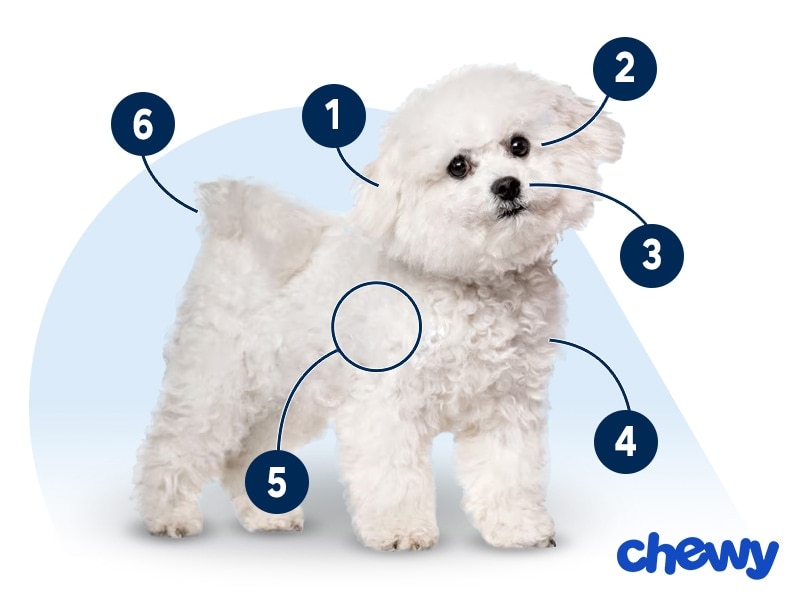
- Ears
Bichon Frise ears have long fur and are dropped (meaning they lie next to the head instead of standing up in the air).
- Eyes
Their round eyes are black or dark brown.
- Nose
A Bichon’s black nose stands out against their white hair.
- Coat Length
Bichons are double-coated pups with medium-length fur. Their undercoat is soft and dense, while the outer coat is curlier and coarser. This gives the dog a “plushie” feel, and the coat springs back when patted.
- Coat Color
Their coat is white and may have apricot, buff, or cream shadings.
- Tail
They have a plumed tail that arches over and rests on the back.
Bichon Frise Temperament
If the movie biz was composed entirely of canines, the Bichon Frise would win a People’s Choice Award. Their charming personality effortlessly captures everyone’s attention.
Smart with plenty of emotional intelligence, a Bichon can get along well with all types of people—especially when they’re trained and socialized at an early age. They’ll probably be gentle companions for kids, and don’t be surprised to find them having a romp in the yard with your toddler. It’ll be hard to tell who loves who more.
Because Bichons Frise love people so much, they’d really prefer if you never left the house. OK, just kidding, but they don’t like to be alone for long and need someone around during the day. If taking them to work isn’t an option, look into doggy daycare or a trusted pet sitter who can make sure they get in some walks and social activity.
How to Care for a Bichon Frise
Bichon Frise dogs have a coat that, despite not shedding a lot, requires a lot of grooming time. They’ll also need exercise like every other dog breed, but they’re not exactly canine athletes.
They are, however, pros at learning new tricks, so they need a pet parent who can teach them the ropes—and cheer them on.
Grooming
Training
Diet
Exercise
Environment
Bichon Frise Health
A typical Bichon Frise lifespan is 14–15 years. Here are some health issues to be aware of.
- Bladder stones: Bladder stones are common in Bichons. They’re very painful, so treat this as an emergency and get to your vet ASAP if you notice your dog peeing more often, having accidents, straining while peeing, or licking their genital area frequently. Treatment could be as simple as a change of diet, or it could be surgery.
- Diabetes: Bichons Frise are more prone to developing diabetes mellitus. It occurs when the pancreas doesn’t produce enough insulin, resulting in elevated blood-sugar levels. Diabetes can be managed with daily medication, injections, and a strict diet.
- Eye issues: Bichons can develop a few different eye conditions.
- Cataracts are cloudy areas on the lens that hinder vision. They aren’t usually painful, but they can cause vision loss, so get a yearly eye test to catch them early. Surgery is the go-to treatment.
- Distichiasis is when an eyelash grows inward toward the eye, causing irritation and pain. Surgery can treat severe cases.
- Corneal dystrophy causes cloudiness in the outer layer of the eye and can be seen in Bichons as young as 2 years old. It’s inherited and doesn’t always require treatment.
- Luxating patella: Bichons can develop a luxating patella, where the kneecap slips out of place. A bunny hop, skip, or limp could be symptoms. It may be treated with supplements and medications, if mild, though surgery may be necessary in severe cases.
- Portosystemic shunt: Also called a liver shunt, a portosystemic shunt is when blood vessels circumvent the liver, preventing the organ from clearing the blood of toxins. Symptoms include behavioral changes (like head pressing or circling), poor appetite, eating strange things, vomiting, diarrhea, increased thirst or urination, weight loss, poor growth, and/or seizures. Surgery is often the best treatment.
Bichon Frise History
The Bichon Frise has a folkloric history that would make for a fascinating drama perfect for these little performers.
Their origins are shrouded in mystery—are they Egyptian? Maybe. Greco-Roman? Possibly. Adorable? Definitely. Regardless, a small white dog breed is believed to be the ancestor of the modern Bichon, according to the breed club.
What we do know is that this breed’s ancestors lived in Tenerife, on the Canary Islands. Around the 13th century, Bichons Frise were brought to the European mainland and were the delight of royal courts across the continent.
You often see them in Renaissance-era paintings, and King Henry III of France was so taken with the breed, he carried a few with him everywhere in a basket.
In the 18th century, as the aristocracy fell out of favor in many places, so did this sweet breed. They became famous for working with street performers, who adored their winning personality and quick-thinking intellect.
In 1956, Bichons made their way to California, where the Bichon Frise Club of America was founded in 1964. The American Kennel Club recognized the breed in 1973.
A Bichon Frise puppy can cost between $600–$1,000. If you choose this route, pick a responsible breeder.
You can also adopt a Bichon Frise, as there are many looking for their forever homes. Check with a Bichon Frise rescue, like the Bichon Rescue Brigade; keep an eye out for a Bichon Frise for adoption at your local shelter; or search Chewy’s database of adoptable dogs in your area.
